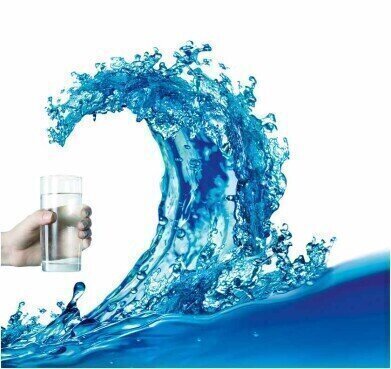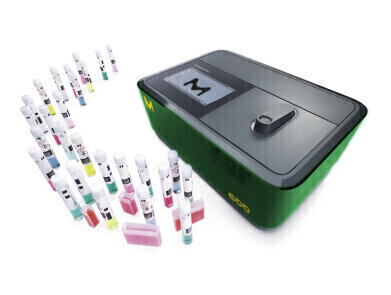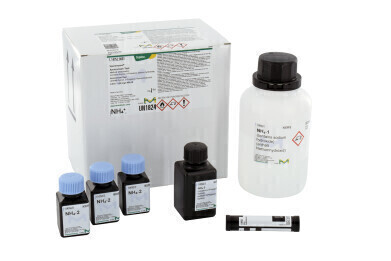News & Views
Water is Food! On World Food Day, ensure safe drinking water, meet regulations with ultra-sensitive water analysis
Sep 12 2023
Contaminated water poses a threat to both human health and the environment. As a result, national and international regulatory agencies like the U.S. Environmental Protection Agency (USEPA), World Health Organisation (WHO), EU, and other regulators have set official testing methods for drinking water and wastewater.
To provide more convenient, while still reliable methods for users, rapid test methods following recognised standards (ISO, USEPA, and others) were developed. Respective certification of e.g., ISO accordance or equivalency to EPA methods assure users that the ready-to-use test kits deliver comparable results so they can be used to comply with national regulations. Additional advantages of these methods are in many cases, that significantly lower volumes of chemicals and sample are used, hence reducing the volume of waste produced and providing more user safety.
Clean and safe drinking water is essential for everyone on our planet. Testing drinking water sources to ensure they comply with applicable regulations, including the Safe Drinking Water Act, is vital.
Safe Drinking Water Act & Clean Water Act – What is it?
The Safe Drinking Water Act reflects the primary drinking water regulation. Drinking water here means finished drinking water from the plant and the distribution lines. Have your documentation and reporting ready to satisfy auditors of adequate quality control and product suitability.
The analysis of drinking water and beverages typically require high sensitivity tests. Using a spectrophotometer provides accurate and fast results. Spectrophotometry can be used for a broad range of applications including measurement of specific chemical levels through to process monitoring for drinking water and beverages.
Have confidence in your drinking water test results with the Spectroquant® Prove Spectrophotometer
Guarantee your spectrophotometric testing methods are compliant with USEPA and other national regulations when analysing drinking water for contaminants. We provide test kits for ammonium, chlorine, COD, nitrate, nitrite, phosphate, sulphate, and more, that are confirmed to be equivalent to USEPA methods and provide comparable results. On our web page, under products, you can filter for the analyte suitability and choose from the broad list of parameters the one that fits your needs.
To learn more how to perform the photometric analyses of drinking water parameters in very sensitive ranges, our articles and webinars are available online:
- Article: Nitrate in Mineral and Drinking Water
- Article: Measuring Chemical Oxygen Demand in Water Treatment Facilities
- Article: An Easier, Faster, and Cost-Effective Option for Measuring Total Nitrogen
- Article: Phosphate in Groundwater and Surface Water: A Rapid and Reliable Determination Method Using the Photometric Spectroquant® Test
- Webinar: Drinking Water Analysis
- Webinar: Analytical Quality Assurance for accurate water testing
- Webinar: Drinking Water Monitoring
WHO Drinking Water Limits and Methods
The WHO declares access to safe drinking water to be a basic human right, being essential to human health and an element of an effective policy for health protection. There are drinking water guidelines published for the maximum allowable levels of many parameters and detailed information on individual parameters can be found in the subchapters of the guidelines.
In addition to imposing limits on parameters, the WHO is also clear on its guidelines for analysis methods.
USEPA Drinking Water Limits and Methods
The Safe Drinking Water Act (SDWA) authorised the USEPA to set enforceable standards for contaminants in drinking water in the interest of public health. Most approved analysis methods come from the USEPA, American Public Health Association (APHA), or American Society for Testing and Materials (ASTM).
We received our first USEPA equivalency certificate in 1999 for a Spectroquant® photometric test kit and continue to work closely with consultants to have more equivalent methods for a range of testing parameters certified. To date, we have equivalent methods to those in the Safe Drinking Water Act for the following parameters: ammonium, chlorine, COD, and ortho- and total phosphate.
For wastewater analysis, we have several equivalent methods to those in the Clean Water Act: ammonium, chlorine, chromium (VI), COD, cyanide, nitrate, nitrite, ortho- and total phosphate, and sulfate.
For more detailed information, including approvals/equivalency documents, visit the website.
EU Drinking Water Directive
The EU Drinking Water Directive (2020/2184 of Dec 16th, 2020)5 established the legal framework to protect human health from the adverse effects of drinking water contamination, providing clear regulations for all member states. Similar to both WHO guidelines and USEPA regulations, limits on various water parameters were implemented in order to protect human health. In its most recent update in December 2020, an important change was included in terms of analytical quality assurance such that the performance characteristics required of a measurement were clearly defined. Any method that fulfills the requirements for Limit of Quantification (LOQ) and Uncertainty (k=2) of the measurement as a minimum can be used.
Digital Edition
ILM 49.5 July
July 2024
Chromatography Articles - Understanding PFAS: Analysis and Implications Mass Spectrometry & Spectroscopy Articles - MS detection of Alzheimer’s blood-based biomarkers LIMS - Essent...
View all digital editions
Events
Jul 28 2024 San Diego, CA USA
Jul 30 2024 Jakarta, Indonesia
Jul 31 2024 Chengdu, China
ACS National Meeting - Fall 2024
Aug 18 2024 Denver, CO, USA
Aug 25 2024 Copenhagen, Denmark




.jpg)

24_06.jpg)













